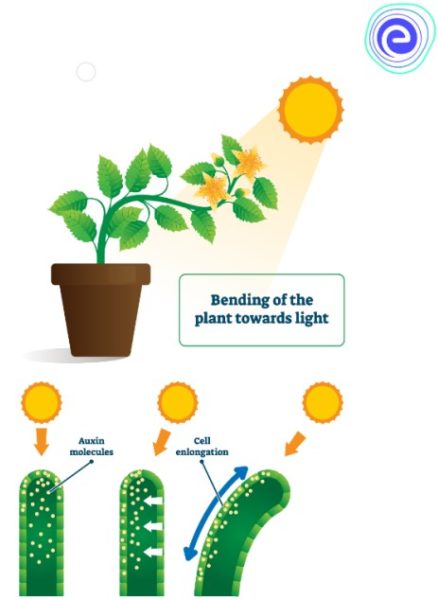SOLAR ENERGY CONVERTERS-
Nearly all renewable energy comes either directly or indirectly from the sun, which powers plant growth and water cycle (Fig...) There are the following three main types of energy systems that can be used to harvest the solar energy directly: (1) passive, (2) active, and (3) photovoltaic systems.
Passive Heating and Cooling-
- It is the most cost-effective way of warming buildings. In such a system, the buildings have the following features: (i) thick insulation, (ii) energy efficient windows, and (iii) they make use of stone and earth to store heat and cold. The soil a few feet below the surface remains at a constant temperature all the year round (in U.S.A., at 5°-15°C); this can be used to keep the house cool by putting all or part of the building underground. Alternatively, the house can be cooled by using the cold air from a water tank, tunnel, or cellar in the ground beneath the house, using a heat pump to transfer heat from house to ground.
- Houses heated by passive solar energy have energy efficient windows that absorb as much heat as possible from the sun. They also have large areas of stone or tile in walls and floors since they store heat and cold more efficiently. Such houses are about 90% efficient, i.e., 90% of the energy that reaches the house heats the living space, and can heat a properly built house even in winters when temperatures drop to -30°C so long as there is plenty of winter sunshine.
Active Solar Heating-
- Active solar heating systems have heat collecting boxes, most of which are insulated boxes with a layer of glass or plastic polymer on one side. The inside of box is dark coloured so that it absorbs as much solar radiation as possible and converts it into heat. The heat is carried away from the box by water flowing through pipes or air circulated by a fan; this heat is used to heat an insulated tank of water and the air/water is returned to the collector.
- The storage tank provides hot water and heating for the building; it can also be used to run a heat pump to operate the cooling system. Solar heat can be used to generate electricity. For example, curved reflectors may be used to focus the sun's rays on pipes containing oil; this hot oil is used to heat water to generate steam that is used to drive a steam turbine to generate electricity.
17.4.3. Solar Cells (Photovoltaics)-
Solar cells are divices that convert solar energy directly into electricity. A solar cell consists of thin wafers of semiconductors, which are substances that give out electrons when struck by light energy. The electrons flow out of the semiconductor wafers as an electric current Fig.. which can be used immediately or stored in a battery. Solar cells have been used since 1958 to generate electricity in space for systems like satellites. A solar cell can be used as a battery charger, e.g., on sail-boats, etc.
There are several limitations of solar cells, which are summarised below.
1. They are a reliable source of energy only where there is a lot of sunshine. Most such areas are deserts, where few people live.
2. Therefore, the energy produced in such areas as deserts must be stored and transported.
3. Electricity has to to be stored in batteries, which are heavy and inefficient.
4. Transporting electricity involves ugly, potentially dangerous power lines and pylons stretching across the landscape.



%5B1%5D.jpeg)



